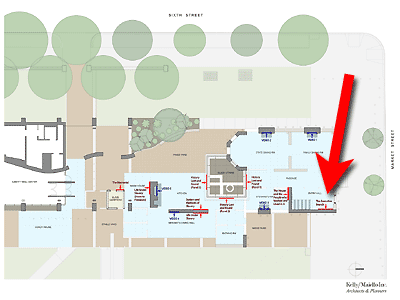The Executive Branch
A NEW NATION: A NEW FORM OF GOVERNMENT
Washington and Adams had to make executive decisions regarding citizenship, Indian territories and slavery. Both favored a strong central government. Those who supported a strong central government were called Federalists. They included John Adams, Alexander Hamilton and James Madison. Republicans, such as Thomas Jefferson, were those who wanted more powers reserved for the states. In many ways their disagreements led to the establishment of a two-party system of government, which still prevails.
EXECUTIVE DECISIONS
INTERNATIONAL
Both Washington and Adams faced shifting alliances with France and England as well as issues regarding international trade. When war between France and Great Britain threatened to expand to the United States, Washington sent John Jay in 1795 to conclude a treaty with Britain to settle old Revolutionary War debts and establish peace.
The terms of the Jay Treaty incensed many, including Thomas Jefferson, who said the treaty acted “against the legislature and people of the United States.” On July 4, Jay was burned in effigy, and on July 25, a crowd gathered,screaming, “Kick this damn treaty to Hell!” Congress ratified the treaty, but it soured relations with France.
Washington, in his Farewell Address, recognized the advantage of our remote location and wealth of resources, and advised against permanent alliances with all foreign nations and stressed the importance of free trade. He warned of the danger of political parties and the importance of the system of checks and balances among the three branches of government.
NATIONAL
CITIZENSHIP
In the United States of the 1790s, race and gender were fundamental to determining citizenship. Debates over who was an American would continue alongside struggles over slavery and immigration into the 1800s. Many of these issues are still issues today.
NATURALIZATION ACT OF 1790
In 1790, Congress debated a bill about the American citizen. Concerns arose about religious and political affiliation, moral character and length of residency. However, there was no disagreement about the most fundamental point: future citizens must be “free white persons.”
RACE, EHTNICITY & COUNTRY OF ORIGIN
Many European immigrants were becoming American citizens, but the U.S. Constitution excluded most Indians because they were “non-taxed.”
In the 1790s, native peoples controlled much of the land of this continent as sovereign, independent nations. Though chiefs of the Iroquois and other Indian nations received medals from President Washington, beneath this picture of friendship there simmered a struggle to define the relationship of land, autonomy, and citizenship on the North American continent as European settlers refused to recognize the primacy of the rights of Indian peoples.
DRIVING THE INDIAN NATIONS OUT OF OHIO
Presidents Washington and Adams proclaimed respect for the soverei nt of the Indian nations et white settlers frequently violated boundary treaties with no consequences from the government. In the Ohio Territory, the chiefs of the Shawnee and Miami refused to leave their ancestral lands, and, after the Battle of Fallen Timbers (1793) and the Treaty of Greenville (1795) most of Ohio was no longer Indian territory.
1798: CLOSING THE DOORS AGAINST “DANGEROUS ALIENS”
By 1798 political alliances had changed.
Immigrants from Europe and the Caribbean crowded Philadelphia streets. Adams and others doubted their loyalty. He signed a new Naturalization Act that required an immigrant to be residents for fourteen years rather than 5 before an immigrant could become a citizen. He had the power to imprison or deport any alien he considered dangerous.
The Alien Act authorized the President to deport aliens considered “dangerous to the peace and safety of the United States” during peacetime.
The Alien Enemies Act allowed the wartime arrest, imprisonment and deportation of an alien subject to an enemy power.
The Sedition Act said that any treasonable act, including publication of “any false, scandalous and malicious writing,” was punishable by fine and imprisonment. It was used to stifle dissent and silence newspapers that opposed the Federalists who believed these laws would strengthen the federal government and weaken Jefferson and his Republican (anti-Federalist) supporters.
RIGHTS OF INDIVIDUALS AND STATES
The Bill of Rights, the first ten amendments to the Constitution, was ratified in 1789 during Washington’s presidency. The Bill of Rights reserves all powers not specificallly granted to the federal government to the citizens or states. It attempted to define individual, state and federal rights. These issues continue to arise, and are sometimes decided by the Supreme Court.
TO IRISH EMIGRANTS & PARTICULARLY THAT CLASS DENOMINATED ALIENS:
The United States are largely indebted for their independence to the exertions of the Irish both in Europe and America.... And what is the return they have met with? A naturalization law, an alien law, a sedition law topped off with the most opprobrious obloquy and abuse that ever disgraced a legislative body.
WHISKEY REBELLION
In 1791 a tax was imposed on distilled whiskey to help reduce the national debt. Angry that large distillers were taxed at a lower rate, several thousand armed men gathered near Pittsburgh to protest. The government sent a militia led by President Washington to quell the resistance. The leaders of the new nation demonstrated its power to enforce the law. Resentment helped elect Thomas Jefferson, a Republican, in 1800.





